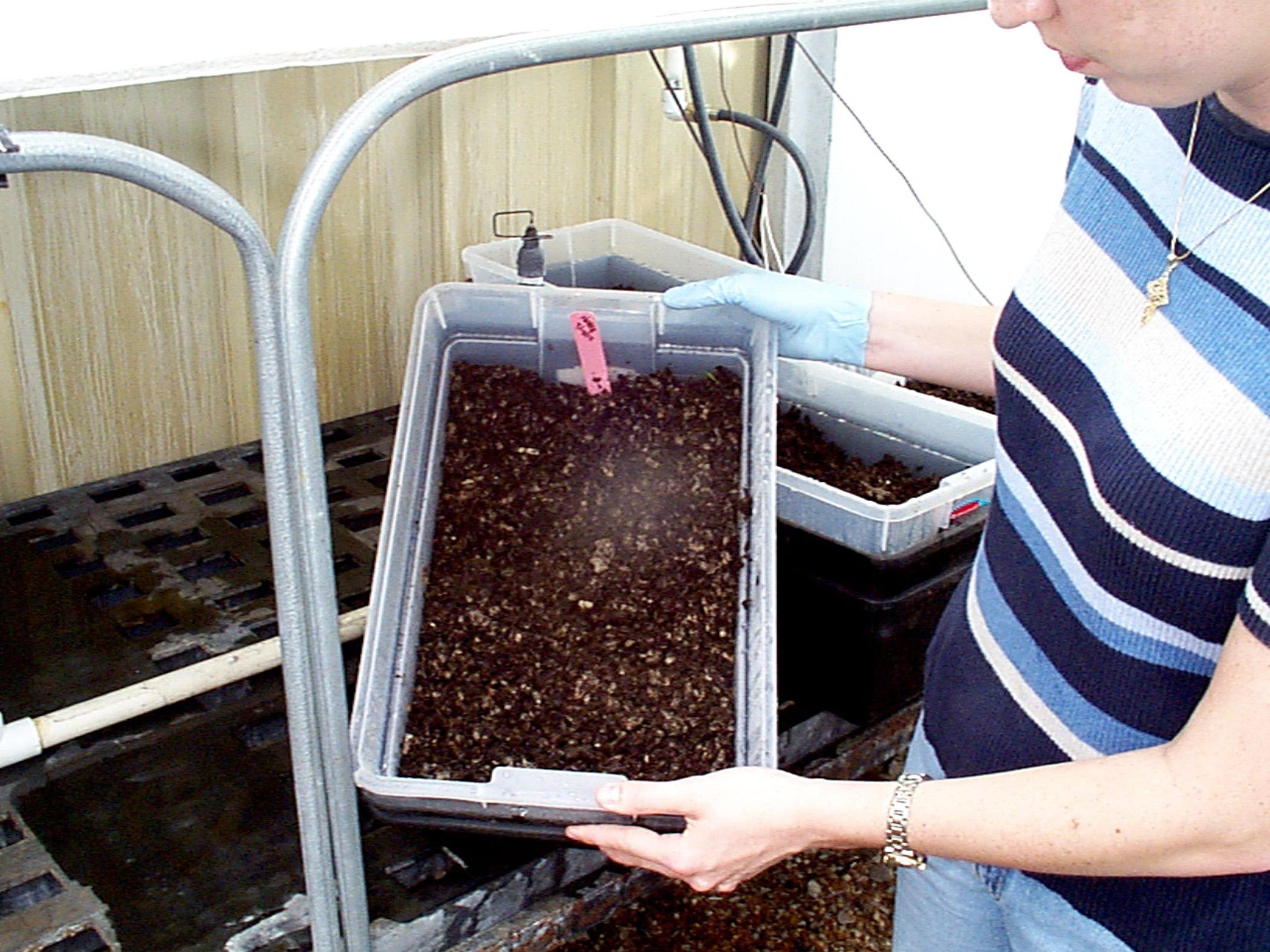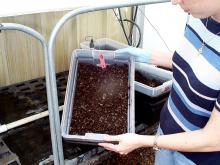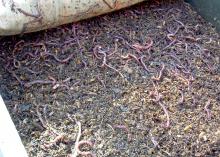Information Possibly Outdated
The information presented on this page was originally released on August 27, 2012. It may not be outdated, but please search our site for more current information. If you plan to quote or reference this information in a publication, please check with the Extension specialist or author before proceeding.
Use worms in bins to create black gold
Last week I highlighted the benefits of making and using compost in the garden and landscape. This week I’m explaining how and why you should use vermicompost. That’s right; I’m talking about worms.
Vermicomposting is a common activity at many of our elementary schools, and the kids generally enjoy participating. Students do it to learn the science of the process. As adults, we use vermicompost to enhance our garden soils and plant growth.
So what is vermicompost? Vermicompost is a finely divided, peat-like material produced by worms from organic waste materials. When added to garden soil or even potting media for container plants, it improves the soil’s structure, porosity, aeration, drainage and moisture-holding capacity.
Vermicompost improves growth and overall performance of both vegetable and flowering plants.
Traditional composting can take several months or longer to break down organic matter. Vermicomposting takes advantage of earthworms, insects and microorganisms to break down organic matter in only days.
Vermicompost really is “black gold,” and it doesn’t have to be applied in large quantities to have a big impact on plant growth. Apply about one-fourth to one-half cup of vermicompost around the base of your vegetables or flowers when planting. Use the same amount for your container plants.
Vermicompost is not fertilizer, but it will boost plant growth by adding life back into the soil and aiding in nutrient availability.
The earthworms usually used for vermicompost are red wrigglers, which are small earthworms less than a quarter-inch in diameter and 3 inches long. They can be purchased in small quantities at bait shops and in large quantities from online retailers.
The worms are not alone in the bin. In established vermicompost bins, a complex community of organisms works together, and these other species of organisms greatly outnumber the worms in the bin. All consume dead organic materials.
Earthworms can break down a wide variety of organic wastes. Feeding the worms is quite simple. Place food waste such as fruit rinds, coffee and tea grounds and eggshells on top of the soil in the bin. Earthworms love melon rinds, but be sure to freeze the rinds first to kill insect eggs that may be in the outer rind. Do not feed the worms meat, oils or dairy products, as these will attract unwanted pests.
Quite a few vermicompost bins are available at garden centers or online gardening supply sites. Commercial worm bins cost from $50 to more than $200. Homeowners can make their own bins using readily available products and materials at home improvement centers and stores.
A worm bin needs to provide aeration, contain bedding that is kept moist, and hold kitchen scraps for feed. Of course it must also be able to keep the worms contained. Plastic bins and totes make good beginner worm bins. You can construct a simple worm bin using a regular 12-gallon plastic tote.
View a simple demonstration on how to make a small vermicompost bin in the “Gardening through the Seasons” video titled “Compost with Wiggle” on the Mississippi State University Extension Service website, MSUcares.com.
More detailed information on vermicomposting is available in the MSU Extension publication P2663, “Vermicomposting for the Mississippi Gardener.” This is available from your local county Extension office.











